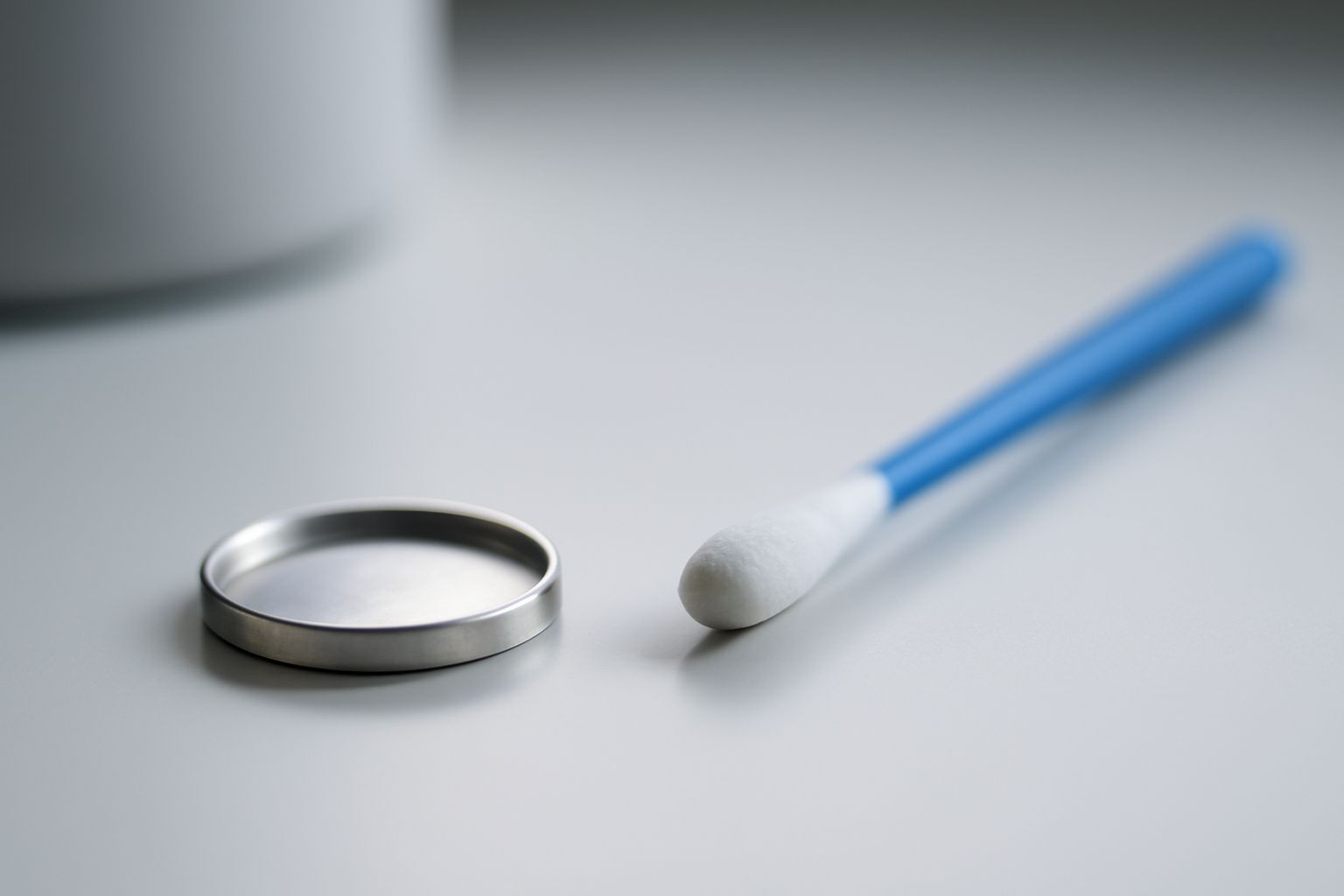Your cart is empty.
shop now
Your cart is empty.
shop now
A small scratch or bit of residue can ruin both your experiment and your aluminum pan. Clean pans properly to avoid costly errors during every DSC analysis.
The best way to care for high-purity aluminum pans is to clean them gently, inspect them often, and follow manufacturer instructions. This protects analysis results and extends the pan’s usable life.

I deal with different labs and see that well-kept pans lead to stable, reliable results. Poor cleaning causes costly test failures or frequent pan replacements. Knowing the right cleaning cycle and keeping maintenance simple help save on budget and boost confidence in each test. Next, I will share the practical steps that make lab work easier and more accurate for everyone using aluminum pans.
Using the wrong brush or harsh chemicals can damage the surface. The right approach means cleaner pans, fewer test problems, and longer equipment life.
Clean aluminum pans with a soft brush, mild detergent, and deionized water. Always dry pans fully. This stops contamination and keeps tests precise.
| Step | Why It’s Needed | What to Use |
|---|---|---|
| Remove Debris | Avoids scratches and leftover residue | Soft brush or compressed air |
| Wash with Mild Detergent | Keeps organic films from building up | Gentle soap and deionized water |
| Rinse Well | Prevents chemical spots | Lots of deionized water |
| Dry Quickly | Stops corrosion | Lint-free wipes or air dry |
I always tell lab users to avoid strong acid, rough sponges, or metal tools. Extra care after every use keeps pans free from film and scratches, improving the DSC test result. These cleaning steps keep the workflow running smoothly and give consistent outcomes.
Small mistakes during cleaning can damage a pan and the results of every test that follows. Getting a few simple habits right prevents trouble in daily work.
The most common errors are using metal brushes, skipping drying steps, or using heat above safe limits. These habits weaken pans and cause unreliable test values.
| Mistake | Problem Caused | Correct Practice |
|---|---|---|
| Scrubbing with Metal | Scratches that limit thermal conductivity | Use only soft material tools |
| Skipping Drying | Corrosion or water stains | Dry completely before use |
| Overheating | Permanently warps or damages pan | Follow temperature guidelines |
| Forgetting Inspection | Hidden flaws build up | Check condition every cleaning |
From what I see, even skilled researchers sometimes damage pans by skipping daily checks or pushing heat limits. Referencing material specs from industry standards like ASTM helps avoid these mistakes. Careful cleaning and regular checks are the best ways to avoid unexpected failures and wasted tests.
If you want pans to last, good cleaning and careful handling are not enough. You also need to use the right storage and tracking for every batch.
By storing pans safely, labeling each batch, and rotating use, you prevent quick wear and enjoy more cycles from each pan before replacement is needed.
| Method | How It Protects the Pan | Why It Works |
|---|---|---|
| Use Dedicated Containers | Prevents denting and surface damage | Separate, padded boxes |
| Batch Labeling | Avoids overuse or confusing samples | Clear marking on entry and exit |
| Cycle Rotation | Even wear, fewer sudden breaks | Swap pans regularly based on usage |
| Consistent Inspection | Catches flaws before failure | Look for cracks or bends after each use |
I tell clients to track usage in a simple log system, which helps predict when pans need changing. According to data published in lab notebooks and quality audits, labs that rotate and inspect pans get 30% longer lifespan on average. Good records mean you never use a damaged pan and protect the quality of every thermal test result (ScienceDirect).
Even with the best care, each aluminum pan reaches a point where it no longer works for accurate lab tests. Knowing the signs helps avoid ruined results.
Replace pans at the first sign of warping, heavy staining, cracks, or loss of fit. Regular checks ensure no bad pan hurts vital DSC readings.
| Sign of Wear | Impact on Analysis | Recommended Action |
|---|---|---|
| Warping | Incorrect sample contact and temperature errors | Remove from use right away |
| Heavy Staining | May alter oxidation or baseline readings | Try to clean, replace if stain remains |
| Cracking | Possible contamination and loss of sample | Dispose and replace pan |
| Poor Fit | Leaks or instrument faults | Check compatibility, use only matched pans |
I find that tracking pan condition reduces last-minute failures. Standard operating procedure in many labs includes a checklist for all pans before and after each set of experiments. This cuts down on uncertainty and protects each data point. Following these rules keeps every thermal analysis result valid and trusted by the whole lab team.
Conclusion
Good cleaning and maintenance keep aluminum pans working longer and help guarantee reliable results in every DSC test.